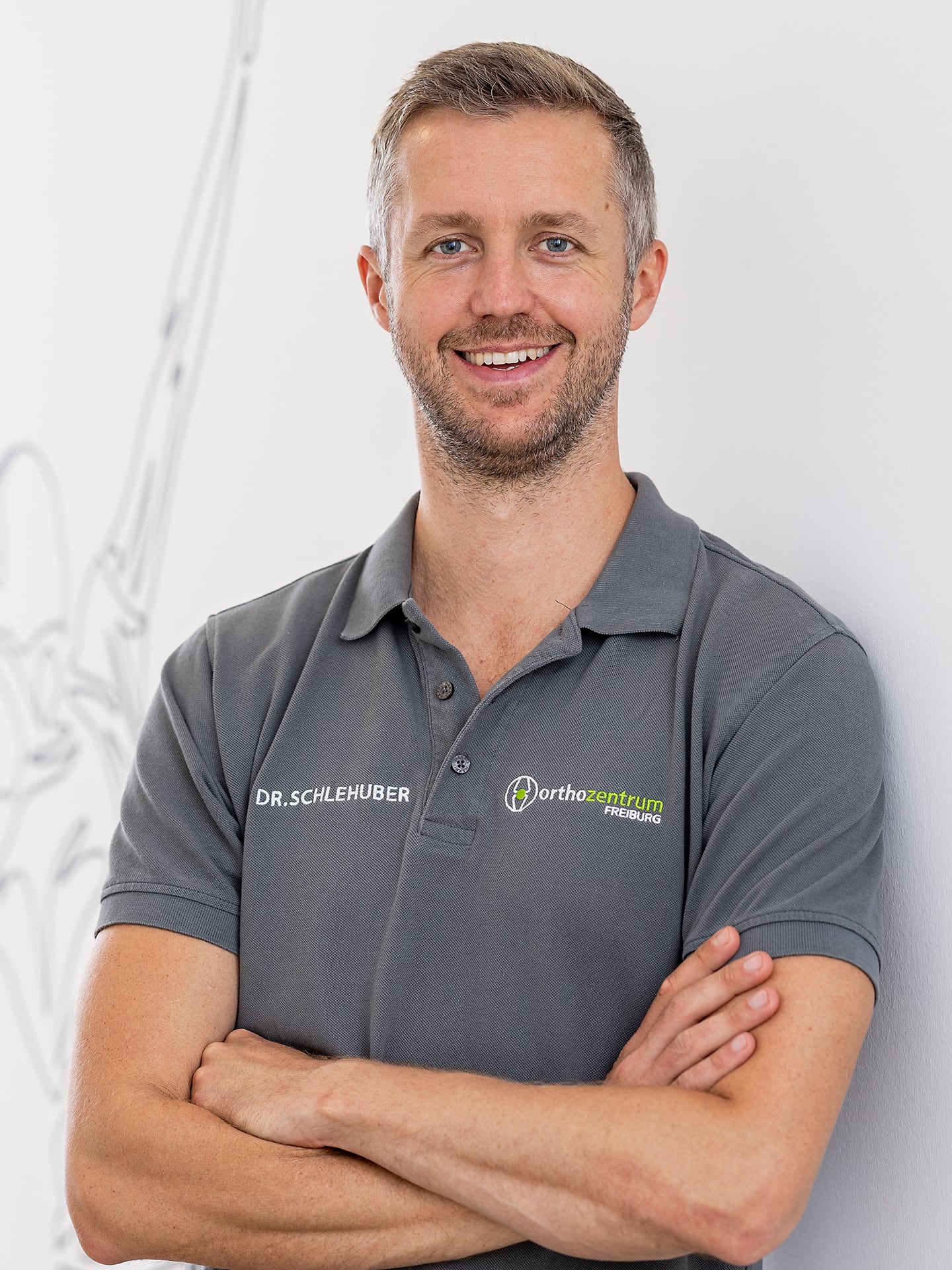Areas of application
Endoprosthetics describes the artificial replacement of a damaged joint. The replacement of the hip joint is performed most frequently, more precisely over 200,000 times a year in Germany (as of 2021). A surgical intervention of this type is intended to help restore the patient's quality of life by reducing pain and improving mobility.
Die Orthopäden des Orthozentrums Freiburg Dr. med. Tarek Schlehuber und Dr. med. Dan Potthoff führen endoprothetische Knie- und Hüftoperationen im Lorettokrankenhaus Freiburg durch.
Causes for hip replacement may include:
- Hip joint arthrosis (coxarthrosis)
- Fractures near the hip joint
- Femoral head necrosis
The most common cause for the use of a hip prosthesis is hip joint arthrosis (coxarthrosis), which can lead to pain and movement restrictions in the hip joint due to age-related wear and tear. After conservative therapy measures have been exhausted, surgical hip replacement should be considered.
Fractures of the femur close to the hip joint or so-called femoral head necrosis can also make prosthetic replacement of the hip joint necessary. In the case of femoral head necrosis, the femoral head dies off due to reduced blood flow.
Prosthetic models
Analogous to the prosthesis models of the knee joint, there are also total endoprostheses (TEP) and hemi-endoprostheses (HEP).
Total endoprostheses replaced the entire hip joint and consist of four different components: Hip head, hip stem, acetabular implant and inlay. The hip stem is anchored in the thigh bone (femur). The femoral head is a spherical implant that sits on top of the hip stem and corresponds to the head of the femur. The original acetabulum is replaced by an acetabular implant, which is supported by a so-called inlay. The inlay is made of special plastic and thus ensures that the joint slides smoothly. The durability of these prostheses is longer than that of hemi-endoprostheses.
Hemi-endoprostheses, for example duo-head prostheses, replace only the femoral head, the acetabulum remains. With this operation, fewer complications and less blood loss can be expected compared to a total endoprosthesis.
To make a final decision on a prosthesis model, the extent of the damage, the patient's health status and activity level must be taken into account.
Operation procedure
The implantation of hip joint prostheses is preferably performed minimally invasively . In minimally invasive surgery, small skin incisions are used and, above all, no muscular structures are permanently damaged. Compared to open surgery, in which larger skin incisions are used, the tissue-sparing work has many advantages. As a rule, there is less pain after the operation, the hospital stay is shorter and the healing process is faster.
There are different minimally invasive approaches: the so-called anteromedial(AMIS technique, Anterior Minimally Invasive Surgery) and the anterolateral(ALMIS technique, Antero Lateral Minimally Invasive Surgery) approach. The hip specialists at the Orthozentrum Freiburg prefer the ALMIS technique. With the ALMIS technique, the minimally invasive incision is made further to the side than with the AMIS technique. There is a natural muscle gap at this point, so the hip joint can be exposed without cutting through muscle tissue.
The surgical procedure differs depending on which prosthesis model is used. In both models, a so-called stem is prepared in the thigh bone (femur) so that the femoral head prosthesis can be securely anchored. In the total endoprosthesis, the acetabulum is also replaced. In general, the prosthesis is inserted and its fit checked under constant X-ray control.
Everything at a glance:
- Operation time: 60-120 min
- Anesthesia: general anesthesia, spinal anesthesia
- Clinic stay: inpatient
- Fit for work: after approx. 6 weeks
- Return to sports (RTS): after approx. 3 months
Aftercare
During the patient's inpatient stay after surgery, initial physiotherapeutic exercises are performed to mobilize the hip joint. In addition, thrombosis prophylaxis is started for about 30 days to prevent blood clots. This involves injecting the medication into the lateral abdominal area using a small syringe.
In addition, a so-called ossification prophylaxis is performed. Ossification describes the ossification of soft tissues or muscle tissue, which occurs frequently after prosthesis implantation. For this purpose, a drug from the group of non-steroidal anti-inflammatory drugs (NSAIDs) is administered over 2 weeks.
The inpatient stay should definitely be followed by rehabilitation and continuous physiotherapy.


